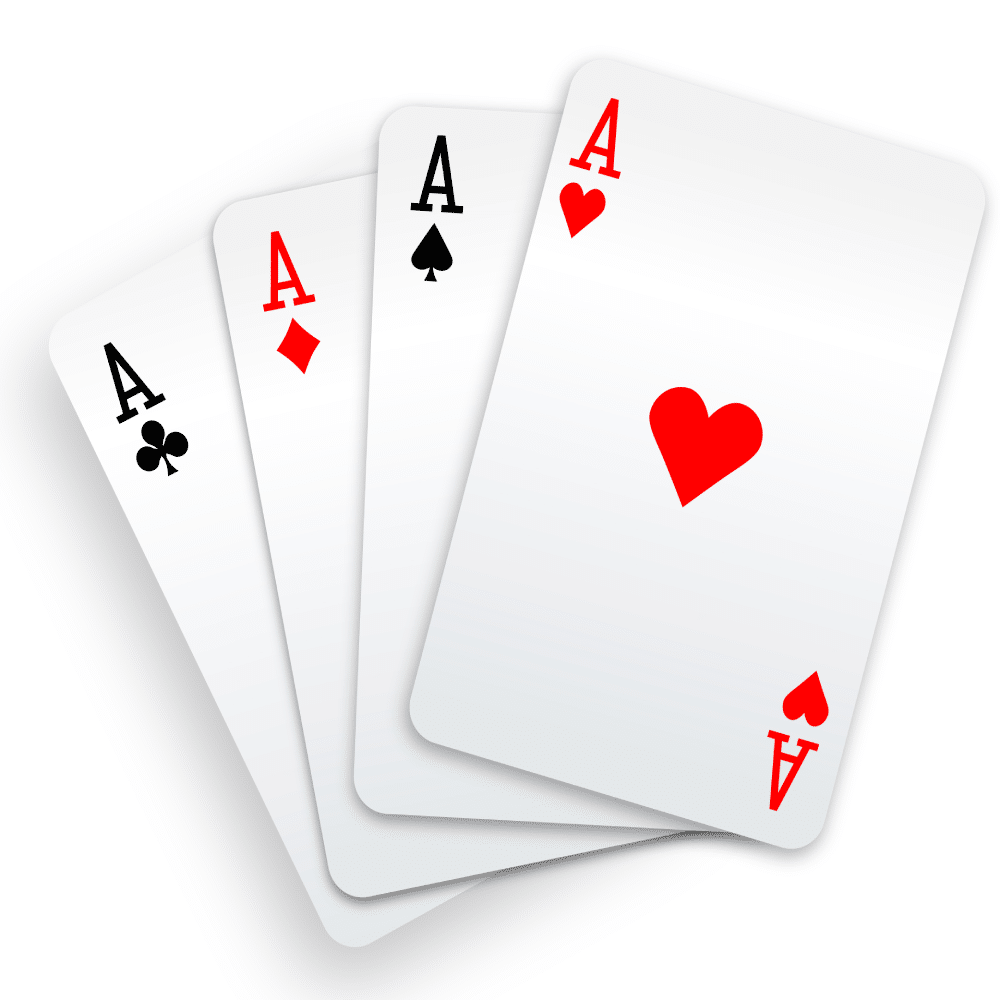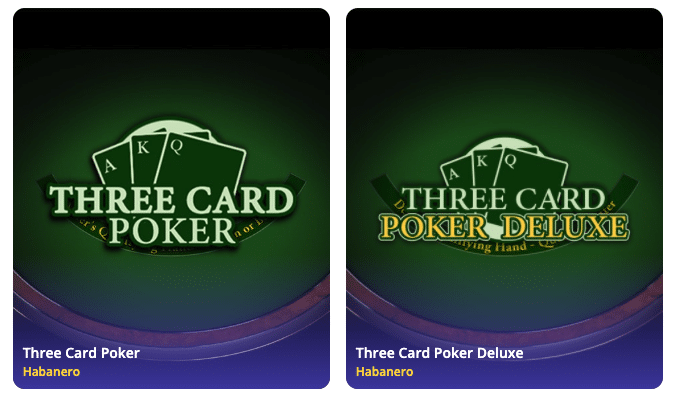Live Poker
Poker is a popular table game all over the world. With it’s exciting, challenging, and rewarding nature, poker has become a staple game in both land and online casinos. The charm of poker doesn’t lie in its rewards alone. It’s entertaining and allows you to sweeten the pot with every wager you make.
Deal your cards right and develop the skills you need for poker when you play at Casino Days. We offer the best and most updated poker online games that you can access across devices. Whether you’re a beginner or an expert, we have a wide selection of poker games that will suit your skills.
To boost the fun and excitement, we also have live dealer poker games to add extra spice to your gameplay. Wager now and feel the thrill and adrenaline rush through you when you play poker at the Casino Days online casino!

Win a hand when you learn the basics of poker
Poker requires a standard deck of cards. In some variations of the game, the dealer uses the Joker to play. The cards will be arranged depending on the rank and value. Ace is the highest, with the Jack, Queen, and King trailing behind. Meanwhile, the card suits’ values are seen depending on the number they have. Your game objective in poker is to have the highest combination of cards in your possession.
To win at poker, you need to have the highest hand as much as possible. However, one thing you should know is that in poker, you will have no idea whatsoever about the cards of other players. You will have to bluff your way to winning.
Here are the basic poker hands from highest to lowest that you should know about:
Royal Flush
The royal flush requires the A, K, Q, J, and 10 in the same suit.
Straight Flush
The straight flush requires five cards arranged in a sequence. All should be in the same suit.
Four of a Kind
All of the cards should be in the same rank.
Full House
The full house should have three-of-a-kind with a pair.
Flush
The flush requires any five cards of the same suit. The cards don’t need to be arranged in the same sequence.
Three of a Kind
The cards should be three cards in the same rank.
Two pair
The hand should have at least two cards with the same rank.
High rank
If the card you have doesn’t have the hands mentioned above, you will bank on the highest card you have.

Raise the stakes with these poker actions
Before starting with poker, you need to know that there are actions that you should be familiar with. These basic poker actions will help you adjust your pace and keep up with your opponents. Here’s a quick run-through of the most common actions you can do in poker online:
Fold
Folding is one of the most common actions in poker. Most players think that this action is an act of weakness, but it’s a necessary step to take, especially when you’re not confident with the cards you have. Folding can help you lessen your losses if you think you’re on the verge of losing.
If you want to fold in a poker game, all you need to do is toss your cards in. However, you will not show the cards to your opponents because this can be used to their advantage.
Call
Calling in a poker game means you’re wagering the minimum bet in the pot. You can play this action to your advantage by raising the stakes if you think that your opponent doesn’t have a good hand. Additionally, if you re-raise, you can make more money or receive the same amount if your rival folds.
Raise
Raising is an action where you increase the wager you add to the pot. Usually, players raise or re-raise during poker games.
Re-raise
A re-raise in poker happens when someone in the game wagers and then you place a higher bet. This action usually indicates that you’re bluffing or you have a strong hand in your possession.
Check-raising
Check-raising is a tactic commonly used in poker variants such as Texas Hold’em, Stud, and Omaha. This action happens when you check on a good hand in hopes that someone on the table will follow after you raise. When employed correctly, check-raising can make your opponents fold and increase your chances of winning.
Ante
Ante is when players are forced to place a wager. In some poker online versions, this happens before the game commences. The accumulated wagers from this create the pot of the game.
Bluff
Bluff is when you make a bet or raise with a hand that you don’t have. This action aims to make your opponents think that you have a good hand to make them fold from the game.
Busted
Busted in poker means that you lose all of your chips.
Cashing out
To cash out means that you will exchange your chips for cash when you leave the game.
Poker betting limits
No Limit – This type of betting limit in poker means that you can raise your wager to any amount during any betting round.
Pot Limit – The pot limit means that each player in the table can wager or raise to any amount, including the total size of the prize pot.
Fixed Limit – Players are given an option to call or bet but only with a limited amount of wagers.

Different types of poker online
Texas Hold’Em
Texas Hold’Em is arguably the most popular variant of poker. In this game, there are two hidden hole cards and five exposed community cards on the table. During Texas Hold’Em, the betting happens in four different rounds. Once the hole cards are dealt, three community cards (Flop) will be unveiled by the dealer. It will soon be followed by the fourth card (The turn) and the fifth card (The river). You have to put your best hand forward for Texas Hold’em. You need to have the best hands using the hole and community cards.
Limit Texas Hold’em and No-Limit Texas Hold’em are the two variants of this game.
Omaha
Omaha is a variant of Texas Hold’em where 2 – 10 players can play at a time. Similar to Texas Hold’Em, Omaha has four rounds of wagering. However, Omaha deals with four hole cards and five community cards. You must put your best hand in the 5 cards given to you.
7-card stud
The 7-card stud is a variant of poker where the players are dealt with 7 cards, three down and four up. Players must have the highest possible 5-card combination from the 7 cards.
5-card draw
For this type of poker, players are dealt 5 cards. They may opt to choose or trade up to three of their cards.
High/Low Chicago
High/Low Chicago is a poker game where the cards are played from highest to lowest. During this game, the player with the highest face-down spade will take home the pot. Meanwhile, in Low Chicago, the player with the lowest spade face-down is the winner.
The other half of the pot in this game is awarded to the player who has the best hand. For a player to win the whole prize pot, he must have the best hand and the winning spade, depending on the version.
Razz
Razz is an exciting variant of poker. This game is a lowball variant of poker with the hands flipped upside down. The goal of this game is to make the worst possible hand combination. The ace card has the lowest value in the deck while the flushes are not counted.

Tips and tricks when you play poker online
Poker is a strategic game where you need to employ strategic skills to help you win. While there are no definitive strategies to ensure your success, you can follow basic tactics to boost your gameplay from mediocre to amazing. Here are some of the best poker tips you can apply to help you get started with poker:
Learn the rules, positions and card ranking
Before you get started with poker, you have to know the different card rankings and hands that you will encounter. While this tip sounds basic, you must know the poker hand rankings by heart. There are no cheat sheets while playing poker. You have to use your knowledge and skill if you want to take home the jackpot.
Aside from learning card rankings, you also need to learn how to analyze your opponents’ actions. For example, if your rival checks too quickly, this can be a sign that he has a weak hand. This gives you better leverage and a more convincing bluff.
Begin with low wagers, then work your way up
If you’re a beginner in poker, it’s best to stick with placing small wagers. As you go along the game, you can slowly increase your bets until you achieve the desired amount. Don’t announce that you’re all in, especially if you’re not yet familiar with the ropes of the game.
Bluff effectively
Bluffing is one of the things you should master in poker. If you want to become a true blue poker player, you have to learn the art of bluffing and learn it well. Players who often lose in poker are the ones who don’t know how to bluff effectively.
When it comes to bluffing, you need to learn how to assess the game situation. Take into consideration your opponent’s capped range, actions, and how you played out your wagers throughout the game. Doing this can help you recognize your bluffing advantage.
Try out different hands
Every poker player has a favourite hand that they turn to. However, don’t bank all your faith in the same hand, over and over. Remember, poker is a game of strategy and not luck. You need to be logical if you want to win.
Develop a consistent strategy
When it comes to poker, you need to have a consistent strategy to help you. Changing your tactics just because you feel like it will not help you fare well in the long run. Remember, seasoned poker players stick to one strategy, no matter what their previous game results are.
Manage your bankroll
It’s easy to get carried away when you’re playing poker but this can lead to a lot of losses, especially if you’re not careful. Manage your bank account by allocating a budget that you will spend on your gaming. Whether it’s weekly, monthly, or daily, having an organized budget will help you keep track of your gaming expenses.
Poker games you can play in Casino Days India
Here are the exciting poker online casino games you can try out here at Casino Days India:

Three Card Poker Deluxe by Habanero
Three Card Poker Deluxe is an online poker developed by Habanero. This game has an RTP of 98.04%. With its immersive gameplay, this game mimics a poker table complete with visuals and graphics that will make you feel like you’re playing in a real casino. You can access this game with a minimum wager of 10 credits.

Live Texas Hold’em by Evolution Gaming
Live Texas Hold’em is an exciting slot game developed by Evolution Gaming. This live dealer game features high-quality visuals and top-notch facilities that will give you a seamless gaming experience. In addition, the live dealers who will host the game are entertaining, accommodating, and experienced professionals. You have the chance to take home a jackpot worth 100,000 credits in this game.

Caribbean Stud by Evolution Gaming
You can enjoy Caribbean Stud anytime, anywhere when you play this live dealer game by Evolution Gaming. This variant of poker is hosted by a live dealer who will give you 5 face-up cards. The visuals and recording of the game are high-quality and will give you a smooth gaming experience.
